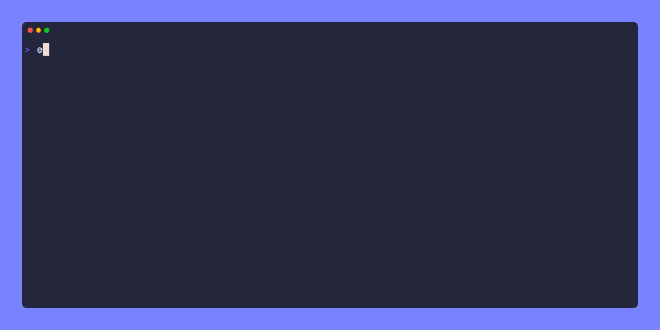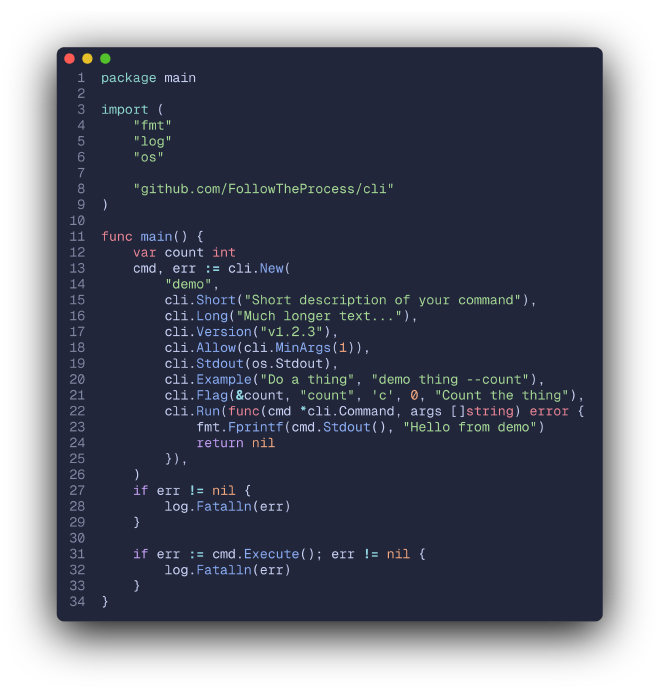Super quick tip today 💡
I write a lot of CLI tools. I love the terminal and I like crafting little tools that I can use. I’ve even made a library to make this easier in Go!
One thing I find difficult however is sufficiently documenting your CLI, and showing it’s behaviour in a way that grabs users and shows them why they want to use your tool.
VHS#
VHS is a tool that lets you write some code, turn that into a gif, then save it (or host it) wherever you like.
It takes a description of the commands you want to run and some settings in a .tape file that looks like this:
Output your.gif
Set FontSize 18
Set FontFamily "Geist Mono"
Set Theme "Catppuccin Macchiato"
Set WindowBar Colorful
Set Padding 5
Set Margin 40
Set MarginFill "#7983FF"
Set BorderRadius 10
Set TypingSpeed 100ms
Type "echo hello" Sleep 500ms Enter
Sleep 2s
Type "clear" Sleep 500ms Enter
Sleep 1s
And gets you this…

I use vhs extensively to document my CLI examples:
And so do charmbracelet, their docs are full of gifs done this exact same way!
- https://github.com/charmbracelet/log
- https://github.com/charmbracelet/huh
- https://github.com/charmbracelet/vhs (very meta!)
Freeze#
Another tool I find myself using is freeze, which generates amazing looking images of code or shell command results. I find it particularly useful when I’m trying to document a library and show how to do a particular thing.
I’ll write the Go code in an example file, then use freeze to render a pretty image, and show that on the README.md for example.
Take this one, from cli:

And all you have to do generate that is:
freeze ./examples/cover/main.go --config ./docs/src/freeze.json --output ./docs/img/demo.png --show-line-numbers
The config is totally optional but I like to save things!
{
"background": "#171717",
"border": {
"color": "#515151",
"radius": 8,
"width": 1
},
"font": {
"family": "Geist Mono",
"ligatures": true,
"size": 14
},
"line_height": 1.2,
"margin": [
50,
60,
70,
60
],
"padding": [
5,
15,
5,
5
],
"shadow": {
"blur": 24,
"x": 0,
"y": 12
},
"theme": "catppuccin-macchiato",
"window": true
}
Go forth and use these tools to improve your docs!
